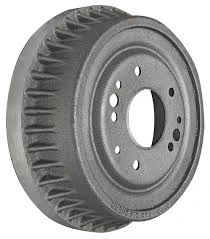
-
 Afrikaans
Afrikaans -
 Albanian
Albanian -
 Amharic
Amharic -
 Arabic
Arabic -
 Armenian
Armenian -
 Azerbaijani
Azerbaijani -
 Basque
Basque -
 Belarusian
Belarusian -
 Bengali
Bengali -
 Bosnian
Bosnian -
 Bulgarian
Bulgarian -
 Catalan
Catalan -
 Cebuano
Cebuano -
 Corsican
Corsican -
 Croatian
Croatian -
 Czech
Czech -
 Danish
Danish -
 Dutch
Dutch -
 English
English -
 Esperanto
Esperanto -
 Estonian
Estonian -
 Finnish
Finnish -
 French
French -
 Frisian
Frisian -
 Galician
Galician -
 Georgian
Georgian -
 German
German -
 Greek
Greek -
 Gujarati
Gujarati -
 Haitian Creole
Haitian Creole -
 hausa
hausa -
 hawaiian
hawaiian -
 Hebrew
Hebrew -
 Hindi
Hindi -
 Miao
Miao -
 Hungarian
Hungarian -
 Icelandic
Icelandic -
 igbo
igbo -
 Indonesian
Indonesian -
 irish
irish -
 Italian
Italian -
 Japanese
Japanese -
 Javanese
Javanese -
 Kannada
Kannada -
 kazakh
kazakh -
 Khmer
Khmer -
 Rwandese
Rwandese -
 Korean
Korean -
 Kurdish
Kurdish -
 Kyrgyz
Kyrgyz -
 Lao
Lao -
 Latin
Latin -
 Latvian
Latvian -
 Lithuanian
Lithuanian -
 Luxembourgish
Luxembourgish -
 Macedonian
Macedonian -
 Malgashi
Malgashi -
 Malay
Malay -
 Malayalam
Malayalam -
 Maltese
Maltese -
 Maori
Maori -
 Marathi
Marathi -
 Mongolian
Mongolian -
 Myanmar
Myanmar -
 Nepali
Nepali -
 Norwegian
Norwegian -
 Norwegian
Norwegian -
 Occitan
Occitan -
 Pashto
Pashto -
 Persian
Persian -
 Polish
Polish -
 Portuguese
Portuguese -
 Punjabi
Punjabi -
 Romanian
Romanian -
 Russian
Russian -
 Samoan
Samoan -
 Scottish Gaelic
Scottish Gaelic -
 Serbian
Serbian -
 Sesotho
Sesotho -
 Shona
Shona -
 Sindhi
Sindhi -
 Sinhala
Sinhala -
 Slovak
Slovak -
 Slovenian
Slovenian -
 Somali
Somali -
 Spanish
Spanish -
 Sundanese
Sundanese -
 Swahili
Swahili -
 Swedish
Swedish -
 Tagalog
Tagalog -
 Tajik
Tajik -
 Tamil
Tamil -
 Tatar
Tatar -
 Telugu
Telugu -
 Thai
Thai -
 Turkish
Turkish -
 Turkmen
Turkmen -
 Ukrainian
Ukrainian -
 Urdu
Urdu -
 Uighur
Uighur -
 Uzbek
Uzbek -
 Vietnamese
Vietnamese -
 Welsh
Welsh -
 Bantu
Bantu -
 Yiddish
Yiddish -
 Yoruba
Yoruba -
 Zulu
Zulu
DOT Regulations on Brake Drums | Comprehensive Guide
Understanding DOT Regulations on Brake Drums
Brake drums are critical components in a vehicle's braking system, a fundamental aspect that ensures safety on the roads. In the United States, the Department of Transportation (DOT) has established regulations concerning brake drums to promote efficient braking performance and enhance overall vehicle safety. These regulations are vital for manufacturers, mechanics, and vehicle owners to understand, as they dictate the design, manufacturing, performance, and maintenance standards for brake drums.
Understanding DOT Regulations on Brake Drums
One key aspect of DOT regulations is that brake drums must meet specific performance criteria. For instance, the regulations outline testing procedures to evaluate the effectiveness of brake drums in various scenarios, including emergency braking and prolonged use under severe conditions. This ensures that manufacturers produce quality products that perform reliably in real-world situations. Meeting these stringent performance standards is crucial for the safety of vehicles, especially those used for commercial purposes, such as trucks and buses.
dot regulations on brake drums

In addition to performance standards, DOT regulations also impose requirements on the design and construction of brake drums. The size, shape, and material composition of brake drums are specified to optimize their function and longevity. For example, brake drums are typically made of cast iron or aluminum, materials chosen for their strength and heat-dissipating properties. The regulations ensure that the dimensions of brake drums align with those of the associated braking system components, like brake shoes, to maintain effective contact and enhance braking efficiency.
Moreover, maintenance and inspection of brake drums are also regulated under DOT guidelines. Regular inspections are necessary to ensure that brake drums are free from cracks, warping, and other forms of damage. Vehicle owners and mechanics are advised to consult the manufacturer's specifications concerning maintenance schedules. Proper care not only extends the life of the brake drums but also preserves overall vehicle safety.
The DOT also emphasizes the importance of aftermarket parts compliance with brake drum regulations. Many vehicle owners opt for aftermarket components due to cost or availability, but these parts must meet the same safety and performance standards as original equipment manufacturers (OEM) parts. Using non-compliant brake drums can compromise vehicle safety and lead to severe consequences, including accidents and injuries.
In conclusion, DOT regulations on brake drums are essential for ensuring vehicle safety and performance. By setting strict standards for manufacturing, testing, and maintenance, the DOT aims to minimize the risks associated with faulty braking systems. Understanding and adhering to these regulations is crucial for vehicle manufacturers, mechanics, and owners alike, as they navigate the complexities of automotive safety. As road safety continues to be a priority, compliance with DOT regulations will remain a cornerstone of effective vehicle maintenance and operation.
-
Rear Drum Brakes Maintenance TipsNewsAug.04,2025
-
Key Components Affecting Brake Drum FunctionNewsAug.04,2025
-
Important Inspection for Truck Drum BrakeNewsAug.04,2025
-
How to Prepare for Changing Rear Drum BrakesNewsAug.04,2025
-
Essential Tools for Cleaning Drum Brakes ProperlyNewsAug.04,2025
-
Brake Drum Function GuideNewsAug.04,2025
-
Safety Features of Red Brake DrumsNewsAug.01,2025
